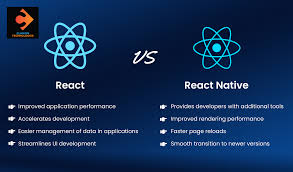
分享原生JavaScript开发TIPS:继承的三种方法。
构造函数的属性继承:借用构造函数
继承的时候,不用改变原型的指向,直接调用父级的构造函数的方式来为属性赋值就可以了
借用构造函数:把要继承的父级的构造函数拿过来,使用一下就可以啦。
借用构造函数:
构造函数名字.call(当前对象,属性,属性,属性....);
优点:解决了属性继承,并且值不重复的问题
缺陷:父级类别中的方法不能继承。
function Person (name, age) {
this.type = 'human'
this.name = name
this.age = age
}
function Student (name, age) {
// 借用构造函数继承属性成员
Person.call(this, name, age)
}
var s1 = Student('张三', 18)
console.log(s1.type, s1.name, s1.age) // => human 张三 18
<!DOCTYPE html>
<html>
<head>
<meta charset="UTF-8">
<title>title</title>
<script>
function Person(name, age, sex, weight) {
this.name = name;
this.age = age;
this.sex = sex;
this.weight = weight;
}
Person.prototype.sayHi = function () {
console.log("您好");
};
function Student(name,age,sex,weight,score) {
//借用构造函数
Person.call(this,name,age,sex,weight);
this.score = score;
}
var stu1 = new Student("小明",10,"男","10kg","100");
console.log(stu1.name, stu1.age, stu1.sex, stu1.weight, stu1.score);
var stu2 = new Student("小红",20,"女","20kg","120");
console.log(stu2.name, stu2.age, stu2.sex, stu2.weight, stu2.score);
var stu3 = new Student("小丽",30,"妖","30kg","130");
console.log(stu3.name, stu3.age, stu3.sex, stu3.weight, stu3.score);
</script>
</head>
<body>
</body>
</html>
构造函数的原型方法继承:拷贝继承(for-in)
拷贝继承;把一个对象中的属性或者方法直接复制到另一个对象中
function Person (name, age) {
this.type = 'human'
this.name = name
this.age = age
}
Person.prototype.sayName = function () {
console.log('hello ' + this.name)
}
function Student (name, age) {
Person.call(this, name, age)
}
// 原型对象拷贝继承原型对象成员
for(var key in Person.prototype) {
Student.prototype[key] = Person.prototype[key]
}
var s1 = Student('张三', 18)
s1.sayName() // => hello 张三
DEMO:
<!DOCTYPE html>
<html>
<head>
<meta charset="UTF-8">
<title>title</title>
<script>
//拷贝继承;把一个对象中的属性或者方法直接复制到另一个对象中
function Person() {
}
Person.prototype.age=10;
Person.prototype.sex="男";
Person.prototype.height=100;
Person.prototype.play=function () {
console.log("玩的好开心");
};
var obj2={};
//Person的构造中有原型prototype,prototype就是一个对象,那么里面,age,sex,height,play都是该对象中的属性或者方法
for(var key in Person.prototype){
obj2[key]=Person.prototype[key];
}
console.dir(obj2);
obj2.play();
</script>
</head>
<body>
</body>
</html>
另一种继承方式:原型继承
原型继承:改变原型的指向。
function Person (name, age) {
this.type = 'human'
this.name = name
this.age = age
}
Person.prototype.sayName = function () {
console.log('hello ' + this.name)
}
function Student (name, age) {
Person.call(this, name, age)
}
// 利用原型的特性实现继承
Student.prototype = new Person()
var s1 = Student('张三', 18)
console.log(s1.type) // => human
s1.sayName() // => hello 张三
组合继承:原型+借用构造函数继承。
DEMO:
<!DOCTYPE html>
<html>
<head>
<meta charset="UTF-8">
<title>title</title>
<script>
//原型实现继承
//借用构造函数实现继承
//组合继承:原型继承+借用构造函数继承
function Person(name,age,sex) {
this.name=name;
this.age=age;
this.sex=sex;
}
Person.prototype.sayHi=function () {
console.log("萨瓦迪卡");
};
function Student(name,age,sex,score) {
//借用构造函数:属性值重复的问题
Person.call(this,name,age,sex);
this.score=score;
}
//改变原型指向----继承
Student.prototype=new Person();//不传值
Student.prototype.eat=function () {
console.log("吃东西");
};
var stu=new Student("小黑",20,"男","100分");
console.log(stu.name,stu.age,stu.sex,stu.score);
stu.sayHi();
stu.eat();
var stu2=new Student("小黑黑",200,"男人","1010分");
console.log(stu2.name,stu2.age,stu2.sex,stu2.score);
stu2.sayHi();
stu2.eat();
//属性和方法都被继承了
</script>
</head>
<body>
</body>
</html>
差不多这么多内容了,大家熟悉下吧。
 51工具盒子
51工具盒子




